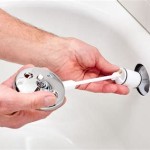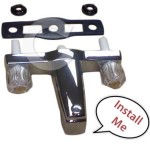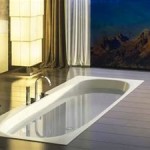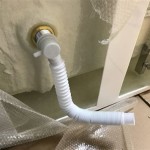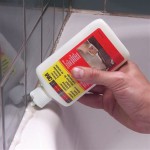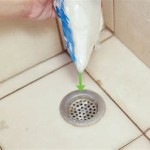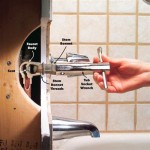How To Get An Elderly Person In and Out of a Bathtub Safely
Maintaining personal hygiene is crucial for the physical and mental well-being of elderly individuals. Bathing, a fundamental aspect of hygiene, can become a significant challenge as mobility and balance decline with age. The inherent risks associated with entering and exiting a bathtub, such as slipping and falling, necessitate careful planning and the implementation of appropriate strategies to ensure the safety and comfort of the elderly person.
This article aims to provide a comprehensive guide on how to safely assist an elderly person in and out of a bathtub. It outlines key considerations, necessary precautions, and available assistive devices that can minimize the risk of accidents and promote independent bathing for as long as possible. The information presented is intended for caregivers, family members, and healthcare professionals responsible for the well-being of elderly individuals.
Assessing the Elderly Person's Capabilities and Limitations
Before attempting to assist an elderly person with bathing, a thorough assessment of their physical and cognitive abilities is essential. This evaluation should encompass the individual's range of motion, strength, balance, and cognitive function. Understanding the specific limitations will inform the selection of appropriate assistance methods and assistive devices.
Range of motion refers to the extent to which a person can move their joints. Limitations in range of motion, particularly in the hips, knees, and ankles, can make stepping over the bathtub's edge difficult. Strength assessment involves evaluating the individual's ability to support their own weight and maintain stability while standing or sitting. Balance is crucial for preventing falls, and impaired balance significantly increases the risk of accidents during bathing. Cognitive function plays a role in understanding instructions and following safety procedures. Cognitive impairments can hinder the individual's ability to cooperate and may necessitate more direct assistance.
During the assessment, observe the elderly person's gait and posture. Note any signs of weakness, instability, or pain. Inquire about any prior falls or near-fall experiences. This information will help to identify potential hazards and tailor the bathing assistance plan accordingly. It is important to consult with a healthcare professional, such as a physician or physical therapist, to obtain a comprehensive assessment and personalized recommendations. They can provide insights into underlying medical conditions that may affect the individual's ability to bathe safely and offer guidance on appropriate exercises and therapies to improve strength, balance, and range of motion.
Implementing Safety Measures in the Bathroom
The bathroom environment should be carefully evaluated and modified to minimize potential hazards and create a safer bathing space. Several key safety measures can be implemented to reduce the risk of falls and injuries.
First, install grab bars securely on the bathroom walls, particularly near the bathtub and toilet. Grab bars provide a stable handhold for support and balance during transfers. They should be positioned at appropriate heights and angles to accommodate the individual's needs and preferences. Verify that the grab bars are securely anchored to the wall studs to ensure their stability and weight-bearing capacity. Avoid using towel racks as grab bars, as they are not designed to withstand the force of a person's weight.
Second, place non-slip mats or strips on the floor of the bathtub and the surrounding bathroom area. These mats provide traction and prevent slipping, particularly when the floor is wet. Ensure that the mats are securely attached to the floor and are free of tears or damage. Replace worn or damaged mats promptly. Consider using a bathmat with suction cups for added stability. Avoid using throw rugs, as they can easily slip and create a tripping hazard.
Third, ensure adequate lighting in the bathroom. Dim lighting can impair vision and increase the risk of falls. Install brighter light fixtures or add supplementary lighting to illuminate the bathing area. Consider using motion-activated lights that automatically turn on when someone enters the bathroom. This eliminates the need to fumble for a light switch in the dark. Regularly check and replace burned-out lightbulbs.
Fourth, maintain a comfortable water temperature. Elderly individuals are often more sensitive to temperature changes and may have difficulty regulating their body temperature. Use a thermometer to ensure that the water temperature is between 100°F and 104°F (38°C and 40°C). Avoid using excessively hot water, as it can cause burns. Before the elderly person enters the bathtub, test the water temperature with your hand or elbow to ensure it is comfortable.
Fifth, keep essential bathing supplies within easy reach. Place soap, shampoo, towels, and other necessary items in a location that is easily accessible from the bathtub. This minimizes the need for the elderly person to reach or bend, reducing the risk of falls. Consider using a shower caddy or shelving unit to organize and store bathing supplies.
Utilizing Assistive Devices for Bathtub Access
Various assistive devices can significantly enhance the safety and ease of bathtub access for elderly individuals. These devices can provide support, stability, and reduce the physical strain on both the elderly person and the caregiver.
A bath seat is a simple yet effective device that allows the elderly person to sit while bathing. This eliminates the need to stand for extended periods, reducing the risk of fatigue and falls. Bath seats are available in various styles, including those with backrests and armrests for added support. Choose a bath seat that is appropriate for the individual's size and weight capacity. Ensure that the seat is securely positioned in the bathtub and that the elderly person feels comfortable and stable while seated.
A transfer bench is another helpful device that facilitates entry and exit from the bathtub. A transfer bench extends over the side of the bathtub, allowing the elderly person to sit on the bench outside the tub and then slide across into the tub. This eliminates the need to step over the bathtub's edge, reducing the risk of falls. Transfer benches are available in different lengths and heights to accommodate various bathtub sizes and individual needs. Ensure that the bench is securely positioned and that the elderly person feels comfortable and confident while using it.
A bathtub lift is a powered device that gently lowers and raises the elderly person into and out of the bathtub. This device is particularly helpful for individuals with significant mobility limitations or those who require assistance with transfers. Bathtub lifts are available in different types, including those that are battery-operated or hydraulically powered. Ensure that the lift is properly installed and maintained according to the manufacturer's instructions. Practice using the lift with the elderly person before using it for actual bathing to ensure they are familiar with the operation and feel comfortable with the process.
A handheld showerhead allows the elderly person to wash themselves while seated or standing. This provides greater control and flexibility during bathing. Handheld showerheads are particularly helpful for individuals with limited range of motion or those who have difficulty reaching certain areas of their body. Ensure that the showerhead is securely attached to the shower hose and that the water pressure is comfortable. Consider using a shower hose with a longer reach to provide greater flexibility.
In addition to these devices, other assistive aids, such as long-handled sponges and bath brushes, can assist with washing difficult-to-reach areas. These tools can promote independence and reduce the need for direct assistance from a caregiver.
The selection of appropriate assistive devices should be based on the individual's specific needs and capabilities, as well as the design and layout of the bathroom. Consulting with a healthcare professional or occupational therapist can help determine the most suitable devices and ensure their proper installation and use.
Proper training on the use of chosen assistive devices is critical. The elderly person and the caregiver have to be fully knowledgeable in all safety procedures and protocols associated with the devices. Regular maintenance checks on all devices are also necessary to guarantee their functionality and safety.

How To Safely Get Out Of A Bathtub Without Grab Bars

Bathe On Your Own Again My Review Of The Maidesite Tub Lift

Getting Out Of The Bathtub Knee Pain Hip Back Weakness

How To Use A Tub Transfer Bench Shower Chairs For Elderly

11 Tips To Improve Bathroom Safety For The Elderly

What Is The Safest Way To Get In And Out Of Tub For Seniors Step2health

How To Get An Elderly Person Bathe Griswold

Cut Your Tub For Seniors Orca Healthcare Supplies

How Often Should Seniors Bathe Ella S Bubbles Walk In Tubs

How Bath Lifts Transform Daily Care For Seniors And Disabled Individuals Jiecang
Related Posts

